A 30-year BP Manager provides perspective
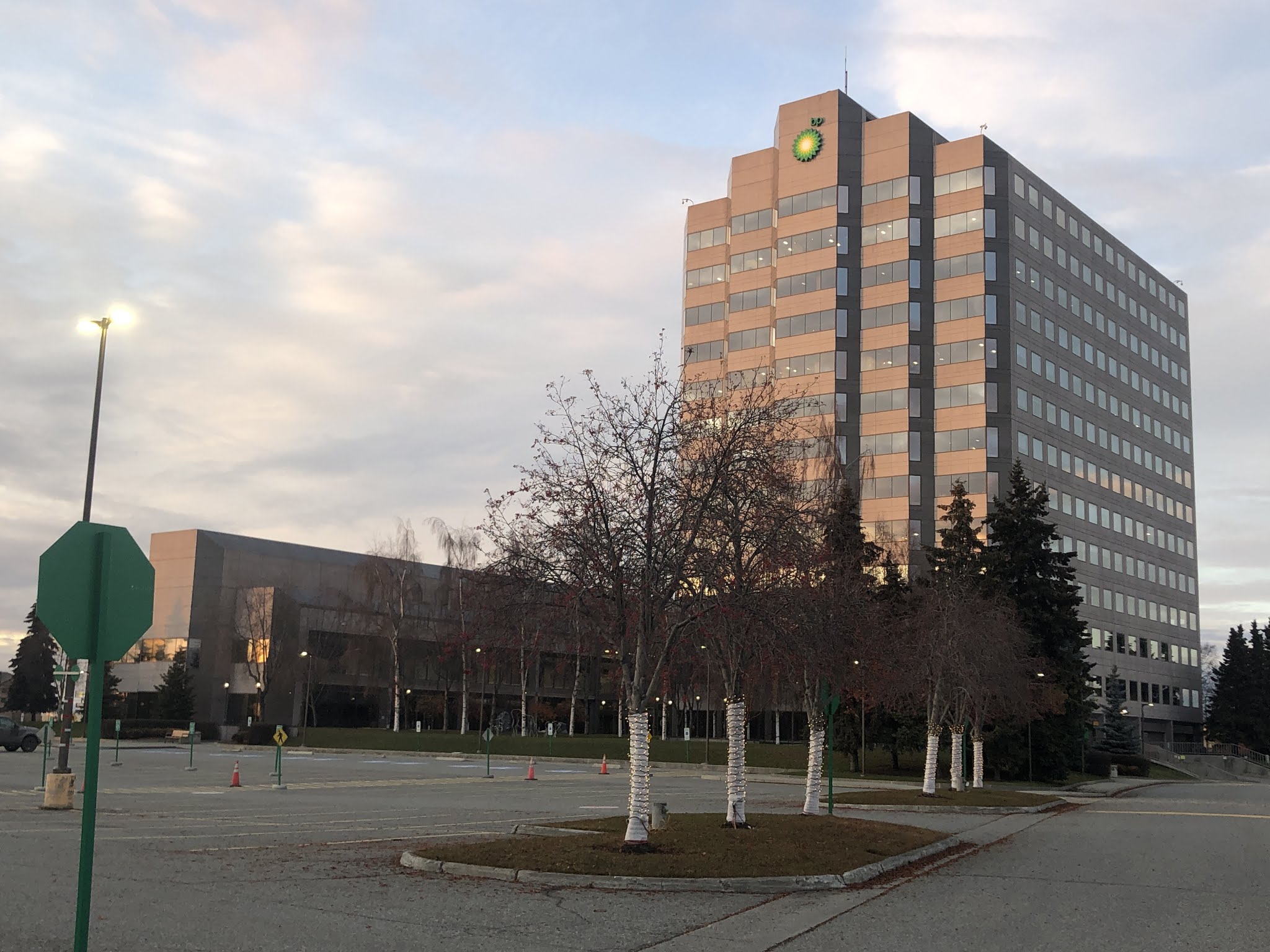
BP’s Anchorage headquarters is a 15-floor, 324,000-square foot, class A office building. It was built from 1983 to 1985, and the entire campus is 18 acres and includes a cafeteria and atrium. It is one of the most recognizable buildings in Alaska. (The company also built and operates the BP Energy Center, a building in midtown where nonprofit groups can meet for free. The Energy Center is the only Alaska asset not included in the sale to Hilcorp and BP has said it will remain in Anchorage “as a legacy.”) [1]
This story is updated from a story originally posted in November, 2019
It’s been a good run since 1977 when the first tanker full of Alaskan Crude oil left Valdez and this state’s future was bought and paid for by the oil industry. No state taxes, incredible infrastructure improvements, a Permanent Fund that pays annual dividends to anybody (and their kids!) who has lived here at least one year.

What a Ride it’s Been!
Some of us have never known anything else and may have taken certain things for granted. We remember when the oil was supposed to run out in 1990, yet it has continued to bolster our economy and lifestyle far beyond that date.
“I think initial estimates of production from the North Slope were 8-9 Billion barrels of oil,” explained Gary Lillo, from the comfort of his home overlooking Eagle River Valley. “By the time I left after 30 years I believe they were already up to 14 Billion barrels from that reservoir.”
From the August 27, 2019 BP company press release:
BP today announced that it has agreed to sell its entire business in Alaska to Hilcorp Alaska, based in
Anchorage, Alaska. Under the terms of the agreement, Hilcorp will purchase all of BP’s interests in the state for a total consideration of $5.6 billion.
The sale will include BP’s entire upstream and midstream business in the state, including BP Exploration
(Alaska) Inc., that owns all of BP’s upstream oil and gas interests in Alaska, and BP Pipelines (Alaska) Inc.’s interest in the Trans Alaska Pipeline System (TAPS).[1]
For elected officials and policymakers THIS should have been a wake up call.
Old Chinese saying: When food is on the table family have many problems. When no food on the table family have only one problem.
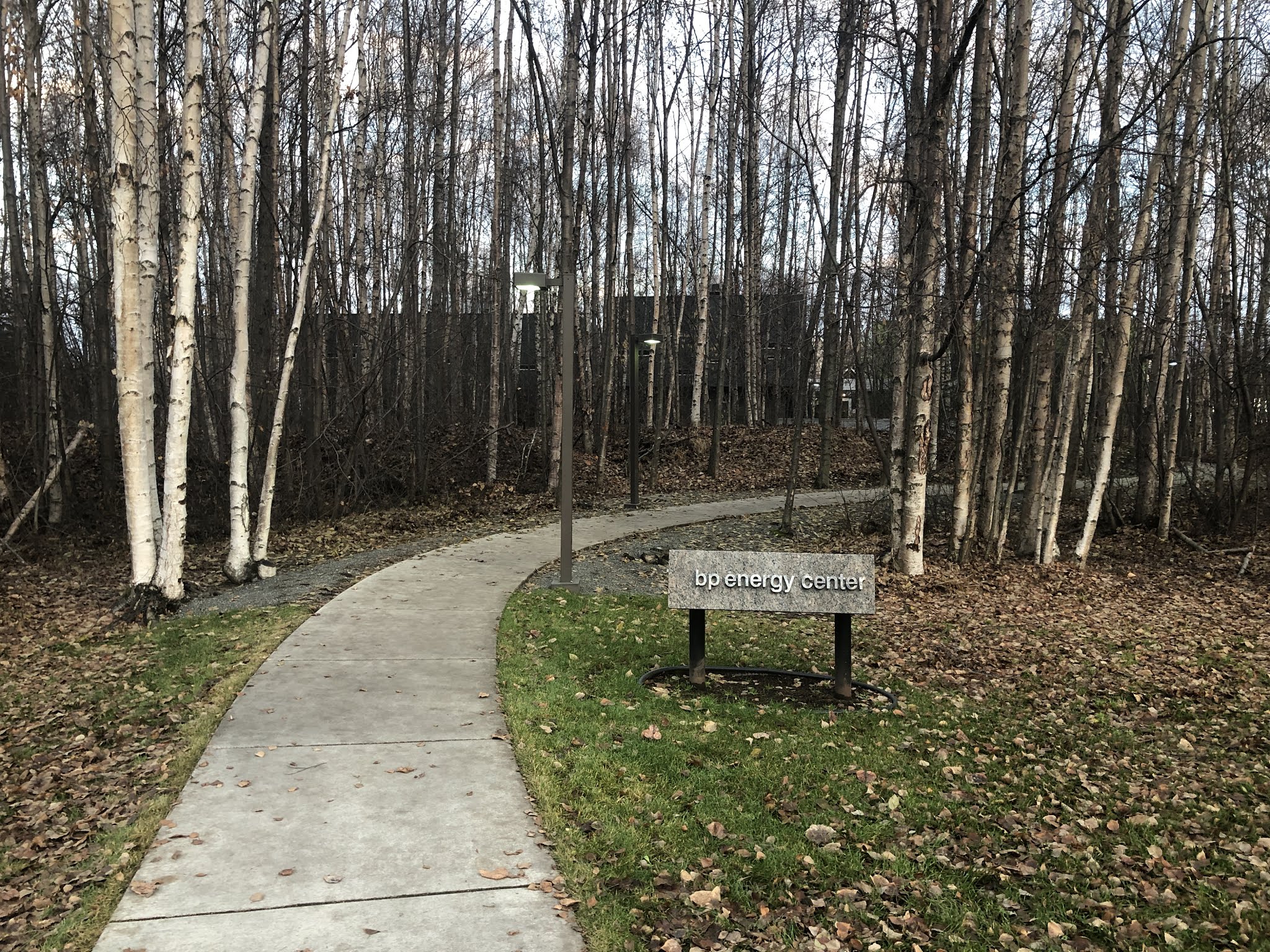
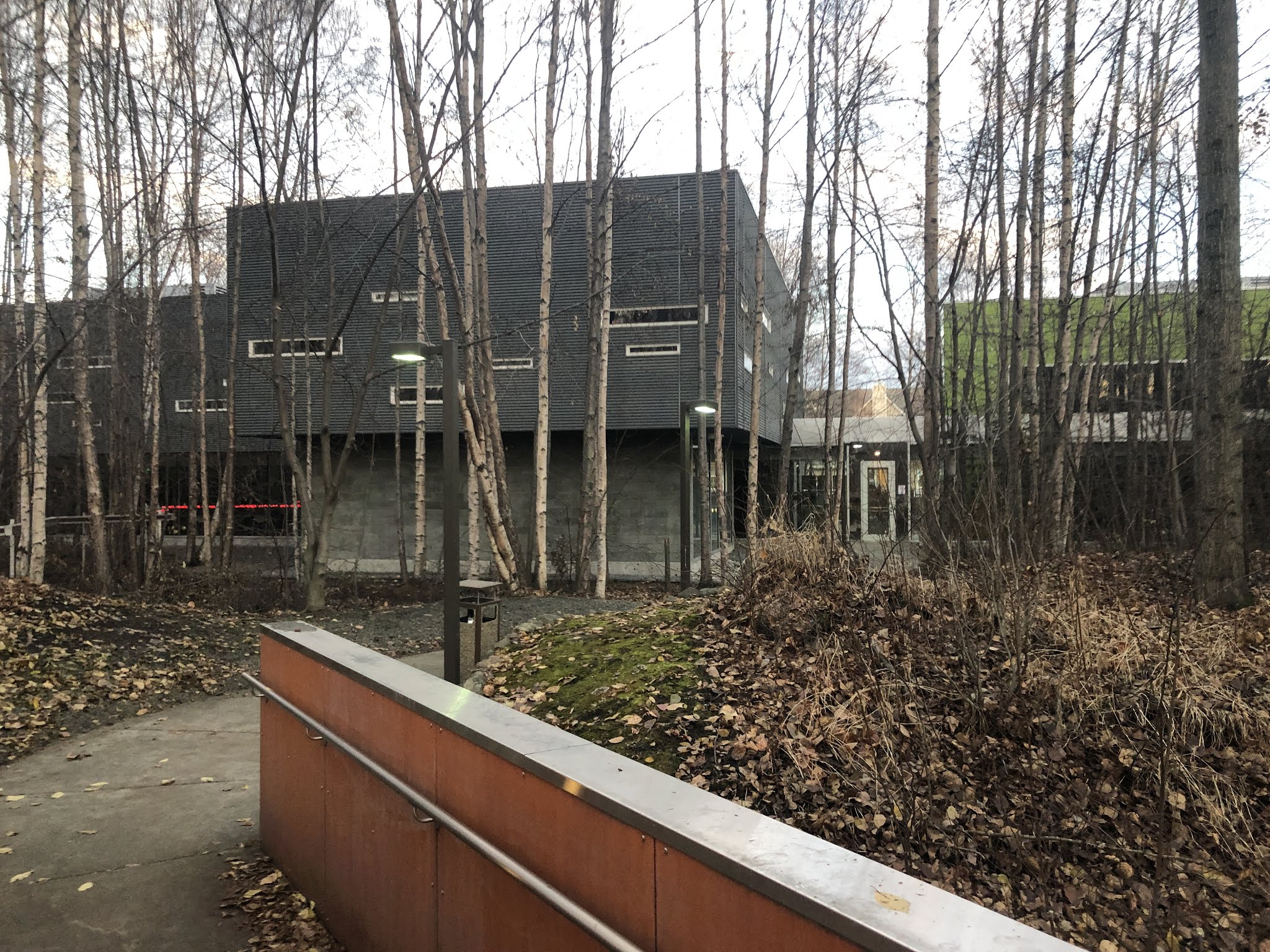
From a personal perspective for me as an Alaskan, working on the North Slope has given me a lifestyle that even my college degree would never have given me even a whisper of hope of anything like it in my lifetime, Lillo said. And I know so many colleagues that are in the same boat; many in retirement living right along Eagle River road here, who I know retired around the time I did. I also know a lot who are Outside now, they bought ranches or property in Hawaii, but a lot are Alaskans still.
Additionally, Lillo expressed appreciation for the fact that since we haven’t paid income taxes
over some four decades a lot of young families have had a better lifestyle. They didn’t have to work for the oil companies but they got the benefit of our oil wealth, he adds.
The British are Coming!

BP Exploration has deep roots in Alaska. In his book Crude Dreams, Jack Roderick details the early days of Alaska oil development and BP’s entrance:
In the summer of 1958, just six months before Alaska Statehood, Anchorage had about 40,000 people (including those at the two military bases), three banks, two movie theaters, streets that were mostly un-paved, and a total of two buildings that stood higher than three stories. Visiting oilmen found entertainment at a number of drinking establishments or chose from the likes of the Oasis Club out on the Seward Highway or the Last Chance at the end of Fifth Avenue. That summer, with the appearance of British Petroleum, the oil scene in Alaska changed permanently [2].
As Roderick tells it, BP geologists had looked over the North Slope during the early 1950s, and believed it had the same potential as the oil fields of Iran. But at the time it was too remote for serious consideration for development.
Events in Iran changed that viewpoint. Assassination of prime minister General Ali Razmara led to nationalization of the Iran oil fields by his successor. According to Roderick: BP suspended Iranian operations, terminated 70,000 Iranian employees, and pulled out. In so doing, it lost two-thirds of its worldwide production and refining capacity.[3]
Other circumstances also caused BP to look north to Alaska. And investment by a British company beginning in 1959 was welcomed by many who believed the Federal government was dragging its feet. Roderick references a comment at the time by geologist F.G. “Geoff” Larminie: There was a very significant degree of support for BP people in Alaska, because Alaskans were basically saying to the federal government, ‘You have neglected Alaska for so bloody long and here comes a foreign operation, they move in, they are operating in a big way, nuts to you. If they can see what’s happening, why can’t you idiots in Washington realize just how important this state is?[3]
Lillo retired from BP in 2009 after spending considerable time at the end of his career innovating routine processes using technology. When he started working for the company they were using Apple IIe computers.

I worked as a technician for 6 months, then they hired me as a manager for the warehouse complexes on the North Slope on the west side of the field. That’s what I did for the next 12 years, said Lillo. When I started in ‘79 I worked for an entity called “Materials Management.” They operated warehouses in Anchorage and on the North Slope, took care of transportation of goods up and down the Haul Road, flights in and out of Prudhoe. We had a 727 charter aircraft that had a compartment in the front where we could put an igloo for high priority freight.”
Lillo continued: At that time BP operated the western side of Prudhoe Bay; Atlantic Richfield Company (ARCO) managed and operated the Eastern part. BP Gathering Center #3 had just been commissioned in the summer of 1979. That was the third gathering center on the west side of the field.
There are a total of six gathering centers. said Lillo. Even in the early 80’s there were several hundreds of wells that had been drilled. With the uplift of oil comes also water and natural gas. These gathering centers separated the water from the oil, the gas from the oil; they re-injected the gas back into the reservoir and pumped the oil over to Pump Station #1. From there it enters the trans-Alaska pipeline to go down to Valdez.
Within a decade of starting to work there BP and ARCO were producing about 2.1 MILLION barrels per day. For a few years during the 1980s they were at maximum production; then production started to plateau, then decline. That has been the story ever since.
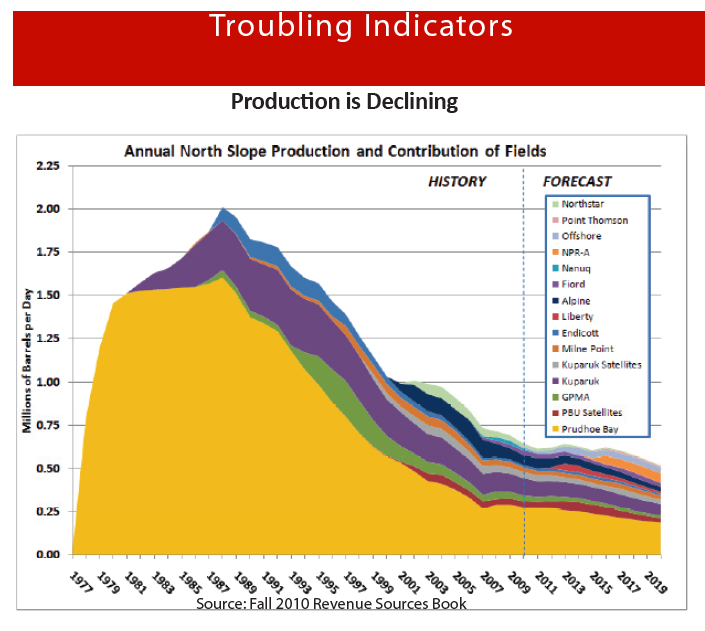
ARCO left Alaska in March of 2000, selling its assets to BP but the sale was deemed illegal and BP sold that holding to Conoco Phillips.
Survival of the fittest
This decline has required producers to change how they do business.
On the North Slope at the time I started BP employees worked a week on and a week off, Lillo explained. The reason for that schedule was that it kept the workers in the state of Alaska instead of encouraging them to leave in their off time and not be a state resident. BP was always concerned about keeping money in Alaska.
He continued: When I first started working up there the Materials ManagementDepartment had several dozen people that worked two shifts, 12-hours per day 7-days per week. I was one of the last people in that department to come off the North Slope in 1992 after it was outsourced to a third-party contractor. Everybody else either got fired, let go, took an early retirement or went to work for a contractor.
This is one way the company sought cost efficiencies–through outsourcing.
As things were being outsourced they were moving people out of the BP Alaska organization to other places, whether it was Chicago, Los Angeles, Houston or they would come up with an early retirement scheme, Lillo added. They offered incentives if you opted out of employment with them. I believe I went through six downsizings. But I figured “If I worked for them a week they owed me a weeks wages, they don’t owe me $125,000 if I say ‘Gary’s gonna leave.’ I wasn’t ready to leave—I loved working for them. Other people knew the handwriting was on the wall when the department they were working in was outsourced to a third party contractor; well either you go to work for that third party contractor and accept whatever they offer you—and you know it isn’t going to be as good as your deal with BP—or you might want to hang on and take the risk, but a lot of people took the $100,000 or $80,000 cash and left.
The Oil Business Challenge

The volatility of oil as a commodity over time should be understood; the producers have a constant number of employees, a constant overhead, operating expenses and taxes while dealing with the uncertainty of oil prices determined by world markets.
Back in the 80’s I remember the price per 42-gallon barrel of oil was nine dollars and thirty some cents, said Lillo. Subsequent to that it shot up to something like $140/barrel and now I think it’s in the $60/barrel range.
To forecast operation costs for budgeting, planners must establish the lifting cost of a single barrel of oil and balance it with expenses. When the lifting cost of a single barrel of oil reaches a tipping point–where taxes didn’t leave enough to provide a return on invested capital–North Slope operators determine whether they should drill more exploratory wells, upgrade facilities, or cut back. Reduction of spending has occurred over recent years.
BP is an International corporation as most of the big oil companies are, with operations all over the world, Lillo explained. If they are going to spend money anywhere they are going to do it with an eye on return on invested capital. If they are making 8-1/2 percent on their money invested in this part of the globe, with one particular entity, and over here in another place they are making 6-1/2 percent, it’s a no-brainer. Where are they going to invest more? Oil companies are in the business of making a profit. If they aren’t making money something has got to change.
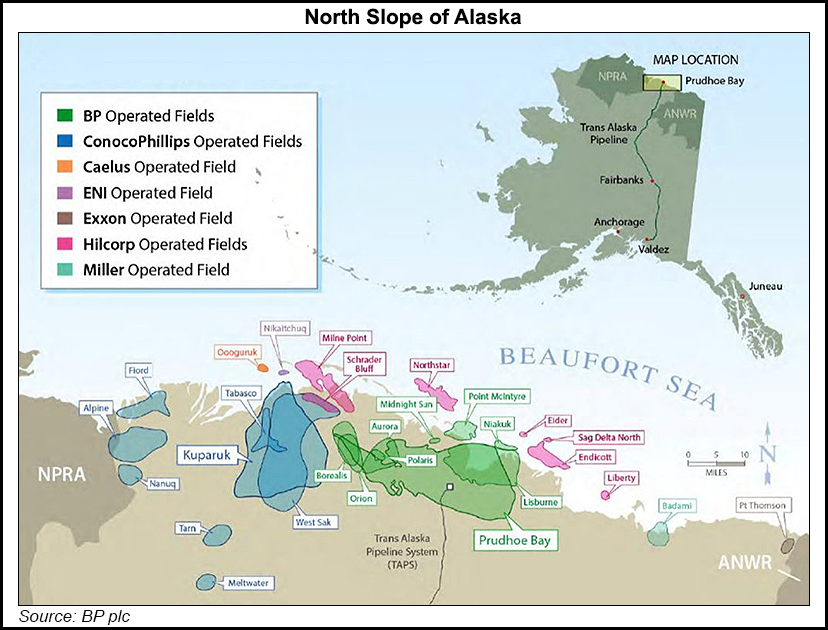
Over the years, as the amount of production has declined, expenses have either stayed flat or rose a bit because of the unstable tax environment in Alaska.
An Expensive Event
According to the National Oceanic and Atmospheric Administration: On April 20, 2010, an explosion occurred on BP’s Deepwater Horizon drilling platform in the Gulf of Mexico. The explosion, which killed 11 men, caused the rig to sink and started a catastrophic oil leak from the well. Before it was capped three months later, approximately 134 million gallons of oil had spilled into the Gulf, the largest offshore oil spill in U.S. history.[4]
I worked on that spill response a few months after I had retired, Lillo said. So far that spill has cost them $65 Billion, cash. $65 Billion! he emphasized. I think that is what they need money for. The company set a target for 2019 of divestitures of $10 Billion and Company President Janet Weiss was quoted as saying it was “cash for the bottom line.“
This litigation is far from over. Previously BP has divested itself of Milne Point, Endicott, sold the Anchorage headquarters building and gotten out of Russian holdings as well as selective other holdings elsewhere around the globe.
I am of the opinion that one, the return on invested capital is probably not as good in ‘Alaska now as in the past, and two, you cannot sell a dead cow to a butcher shop, said Lillo. The North Slope has some life left in it but it isn’t somewhere BP wants to go and punch a bunch of new holes and expect to increase production.
Hope springs eternal in the
Arctic National Wildlife Refuge.

You may know BP is the only oil company that actually poked a hole in ANWR but there is no way you are going to find out what happened! Lillo concluded. The leases for drilling there have not been sold yet, either. If anything could bring BP back to Alaska, it could be ANWR.
This story was written before ANWR Development was approved under the administration of President Trump and then disapproved by President Biden. As a colony of the United States of America, this is just another example of our dependence.
References:
[1]BP Building for sale, ADN, 09-06-19
[2]BP to Sell Alaska Business to Hillcorp
[3]John R. Roderick, Crude Dreams; a Personal History of Oil and Politics in Alaska, 1997, Epicenter Press, p-123.
[4]ibid p-129
[5]NOAA: Deepwater Horizon Spill

I for one, am not sorry to see BP go. I still remember the past, and the questionable accounting done to deflate their debt to Alaska. I have also heard the stories about how they and other oil companies tried to manipulate our citizens and our state representatives into giving them additional tax breaks. Some will say that was just good business but I say it does not go with the propaganda we have endured for decades about them being our friends and partners. Alaska has been treated like a third world country.
Alaska needs its own state oil company and refinery. We should be selling finished products instead of raw resources.
As for ANWR, the following article sums up my view on that and other Alaska state land being held hostage by the Federal Government:
ALASKA’S LANDS: The truth about the Feds’ illegal land grab
As we all know, the Feds insisted on control over a part of our state, and the wealth they contained, in exchange for statehood. This article explains why it was illegal and unethical for the Feds to do so and why our elected officials must sue the Feds for the return of these lands. I would further urge our elected officials to sue for the return of the wealth stolen by the Feds since statehood as well.
Our statehood came at a price, a price that we are still paying on to this day. This price was laid out in a contract, and as such, it is controlled by contract law … and by the U. S. Constitution. This is an undisputed fact, and as such, not in contention. What is in contention is the legality of the contract itself.
In both LONERGAN V. BUFORD, and SNYDER V. ROSENBAUM, the US Supreme Court ruled that our courts will NOT enforce a bargain where one party has unconscionably taken advantage of the necessities and/or distress of the other. The Alaska statehood contract, as an agreement between two decidedly different parties with decidedly different power ratios, qualifies as such under this definition. The Feds, knowing full well the importance of statehood status to the Alaskan territory, used their position of dominance to dictate their terms … of our surrender. And surrender we did.
Chief Justice Abbott wrote: “But if one party has the power of saying to the other, ‘That which you require shall not be done except upon the conditions which I choose to impose’, no person can contend that they stand upon anything like an equal footing.” (MORGAN V. PALMER)
Chief Justice Cockburn was even more blunt: “Where the one person can dictate, and the other has no alternative but to submit, it is coercion.” (ATKINSON V. DENBY)
No other state has been forced to surrender a part of itself to gain statehood … at least that I am aware of. Further, the surrendering of Alaska State land to the Feds is illegal under constitutional law. The 10th Amendment states: “The powers not delegated to the United States by the Constitution, nor prohibited by it to the States, are reserved to the States respectively, or to the people.” This is important because nowhere in the enumerated powers of the Federal Government, does it grant the power to negotiate, aka coerce, away a state’s lands in exchange for statehood.
Under the enumerated powers, the Feds will argue that the land they grabbed is for: “the general Welfare of the United States;” but this quote is taken out of context and thus not applicable. The whole quote is: “The Congress shall have Power To lay and collect Taxes, Duties, Imposts and Excises, to pay the Debts and provide for the common Defense and general Welfare of the United States; but all Duties, Imposts and Excises shall be uniform throughout the United States;” As you can plainly see, this quote is about revenue and how it may be spent, which includes allowing them to spend it on “the general Welfare of the United States”. Nor can the Feds justify the usurpation of Alaska’s state lands under “revenue” as this passage clearly demands that such revenue be “uniform throughout the United States”. Clearly this usurpation of our state lands is not uniform. Alaska alone is suffering this “tax”.
Under the Feds’ enumerated powers, the Feds have one last “power” they love to throw around and may attempt to use to justify their grab of Alaska state lands. I am referring to: “To exercise exclusive Legislation in all Cases whatsoever, over such District (not exceeding ten Miles square) as may, by Cession of particular States, and the Acceptance of Congress, become the Seat of the Government of the United States, and to exercise like Authority over all Places purchased by the Consent of the Legislature of the State in which the Same shall be, for the Erection of Forts, Magazines, Arsenals, dock-Yards and other needful Buildings;”
This passage defines the limit of their power to control land. Notice it talks about Washington DC, and land needed for the defense of our nation, for war … not BLM, national forests, national parks, ANWR, or any other “federal” lands they have usurped from the states. Clearly, despite what the federal courts have concluded, they do not have the constitutional authority to claim lands. Instead, they may request to lease them from the states … if they can come to terms with the individual states on the price of said leases.
The Feds have continually usurped state powers, and have over stepping their enumerated powers, throughout their history. This needs to be stopped. I am therefore asking you the reader, as a citizen of Alaska, to re-post this letter calling for our elected officials to defend our rights to our state lands. This is our state and the Feds do NOT have any right under contract law or the U.S. Constitution, to control, use, or own, our lands. They illegally forced us to “give away” part of our state. It is time to take it back. It is time to take legal action.
Please … do your part as a good citizen. Tell your representatives, our elected officials … “WE WANT OUT STATE BACK!”
Thank you for your time and consideration.
Respectfully,
Floyd E. Harshman
Gov. Bill Egan and the Democrats wanted the State of Alaska to take possession of the oil, build the pipeline and sell the oil. Had that happened the State of Alaska would still be building the pipeline. Remember the Knik Arm Crossing Sen. Ted Stevens got the $funding$ for?
What happened to it?
DONN